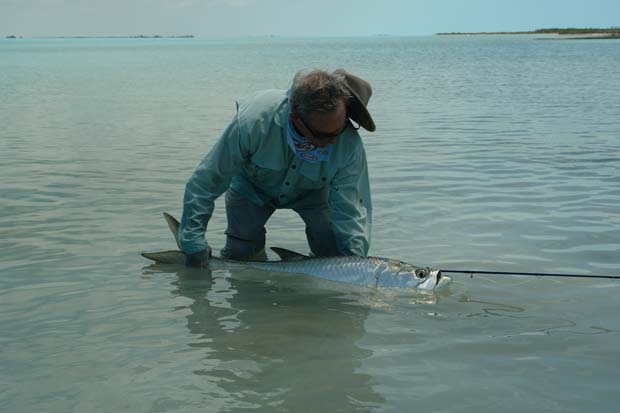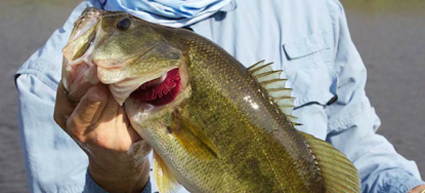Last week, I had the pleasure of fishing with a tournament level bass fisherman who out-fished me two to one using modern-day spinning gear. I fly fished, but it wasn’t really his “modern” gear vs fly fishing. He just never missed a bite. Me, I missed more than a couple of strikes.
However, it was the handling of the fish that struck me. Time and again, he would lip-hold the fish unsupported. A 6-pound bass wiggling and lip held can’t be good for it’s jaw – the very thing it uses to feed itself. When I mentioned that, he brushed it off as nonsense. But when he held a 10-pound wiggler up and its jaw issued a “crack” sound and bee-lined to the bottom upon release – I’d made a point. We watched it from above – mouth agape, on its side and on the bottom. No more dinners ever available for it – DOA.
Here’s a piece about handling bonefish from the Bonefish & Tarpon Trust (BTT). This handling guide, however, is good for every species we love to fish for. Maybe we should all think twice about handling any game fish. By the way, join the BTT and get the latest info on tarpon, bonefish, permit and far more […].
[dropcap]A[/dropcap]lthough catch and release fishing is a valuable conservation tool that can lead to more and bigger fish in the fishery, just because a fish swims away doesn’t mean that it lives to be caught another day. The tips below for increasing the chances that a released bonefish survives are based on scientific research focused on bonefish. Be a responsible angler – use Best Practices for Bonefish Catch and Release.
Hooks:
Hooking location and time needed to remove a hook affects survival rates.
Always use barbless hooks.
When fishing with bait, use circle hooks.
Fight Time:
Shorter fight times increase survival because a fish fought to exhaustion is more vulnerable to predators. Conversely, a bonefish reeled in too quickly may thrash about, increasing its chances of injury.
Tackle should match conditions and the size of the fish so that the fish can be landed quickly, but not until their head can be lifted slightly above the water surface and their movements controlled.
Always land a bonefish before it is exhausted and loses equilibrium when released (cannot swim, nose dives, or rolls over).
If a bonefish loses equilibrium after you land it, revive it until it can swim upright, then shorten the fight time on future fish.
High water temperatures may negatively impact bonefish survival after relesae; in warmer water, reduce fight time and handling time.
Handling:
Minimize handling of all fish; slime and scales can be removed or damaged with excessive handling, thereby greatly increasing the risks of infection. In addition, recent research has shown that mechanical lip-gripping devices can cause damage to mouth tissue if the bonefish struggles against the device, so their use is best avoided.
If you have to handle a bonefish, use clean, wet hands and gently support the bonefish from beneath the head and belly. Nets, mechanical lip-gripping devices, and wet cloths can cause injury to the bonefish.
Use hemostats, pliers, or a hook-removal tool to quickly remove the hook while keeping the fish in the water, and have your pliers ready and available to facilitate a quick release.
Avoid exposing bonefish to air, even when taking a photo. If you must remove the bonefish from the water, limit it to a maximum of 15 seconds.
Touching the gills can cause damage and impair the ability of a bonefish to breathe.
If a lip-gripping device is used, it’s best to use them only to restrain a calm fish in the water while removing the hook. If a fish’s weight is desired, attach a sling to the device, and cradle the bonefish in the sling rather than hanging the fish vertically by the jaw.
Predators:
The survival of released bonefish decreases severely when predators such as sharks and barracudas are abundant because these predators often attack a bonefish soon after it is released. In fact, fish that lose equilibrium are six times more likely to be attacked by predators.
When predators become abundant and appear to be attracted to your fishing activity, consider moving to another fishing location.
If you have caught a bonefish and potential predators are near, if you have a livewell consider using it to hold the fish for a short time and release it some distance away.
Download your own copy of the Best Practices for Bonefish Catch and Release brochure. […]



